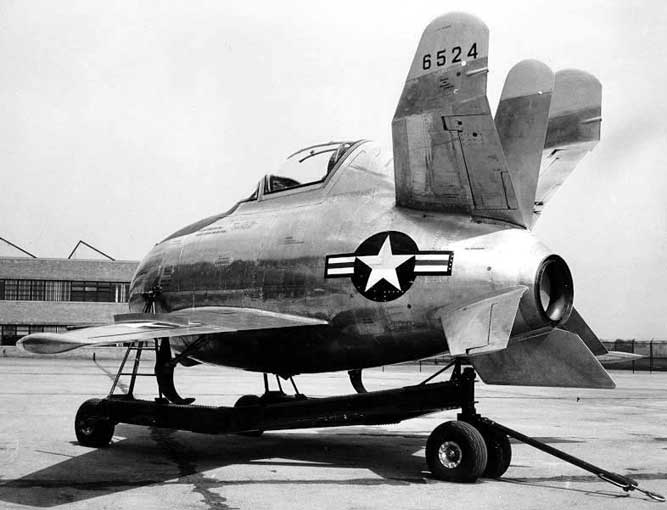

History:
|
|
At the start of 1944 the USAAF asked the aeroindustry to submit proposals for a jet fighter to escort the new long range bombers the B-35 and B-36, then in the prototype stage. McDonnell proposed a small fighter to be carried partially in side the bomber in January 1945, however the Airforce decided that the fighter must be carried completely inside the bomber. In March 1944 the McDonnell company submitted a design of a tiny parasite fighter, with an egg shaped fuselage, a triple fin tailplane and swept-back wings (the first US aircraft to be so)which folded vertically, the aircraft was to be powered by the new Westinghouse J34-WE-7 (a enlarged WE-19XB-2B axial-flow engine) and a pressurized cockpit. The USSAF liked McDonnell,s plane and on the 9/10/1945 ordered two prototypes and one static airframe, with the designation of XP-85, at the same time they specified that all of the new B-36 bomber be capable of carrying one P-85 plus a full bomb load, from the 24th aircraft onwards. |
Depending on the results of the flight trials of the two prototype XP-85s the USAAF planed to place an order for 30 production P-85 was ordered. Progress was slow and the first flight was not until 23/8/1948 which was made by the second prototype (46-524), the first aircraft being damaged in wind tunnel tests. The XF-85 was fitted partially inside a B-29, with the first free flight being on 28/8/1945 for 15 minutes, the small aircraft handed very well but when it came to re-hooking to the mother EB-29B the XF-85 was caught in violent air turbulence, after 10 minutes of trying to engage the trapeze the canopy was shattered, the pilot managed to land the aircraft. Three successful recoveries were made after repairers on the 14-15/10/1948, but on the fifth test flight more problems were encountered with air turbulence and another emergency landing had to be made.
|
The trapeze launch and recover mechanism |
Showing why the wing fold was needed |
The EB-29-B and XF-85 |
With the problems of air turbulence under the mother aircraft, which made re-hooking a difficult job of an experienced test pilot, the idea of a average pilot trying to do the same was considered beyond there capabilities and training. By the autumn of 1949 the Air Force had it's budget cut and consequently shortage of funds for developmental projects, so on the 24/10/1949 the XF-85 was canceled. |
All told the XF-85 was a dead end in aircraft design with the problems of recovery never being overcome, however test pilots commented favorably on it's stability, control and over all performance and it can be seen as a stepping stone to the Republic RF-84F tests of the 1950s.